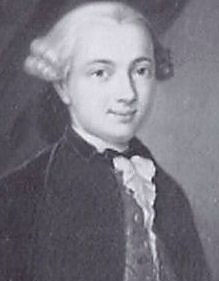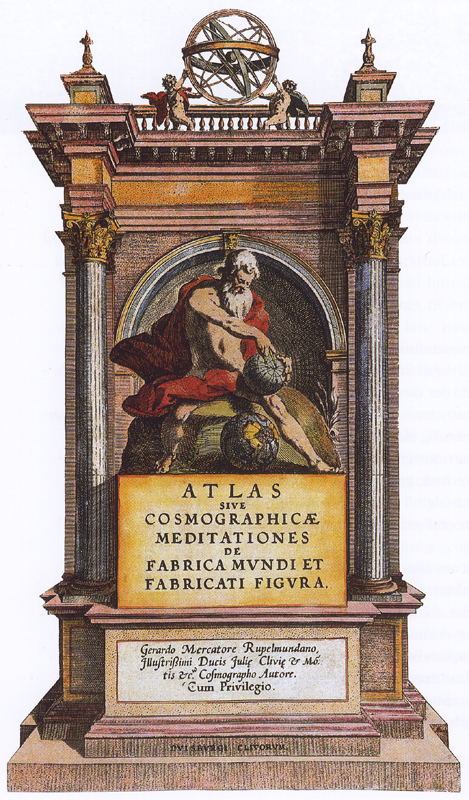|
Polygonum Virginianum
''Persicaria virginiana'', also called jumpseed, Virginia knotweed or woodland knotweed is a North American species of smartweed within the buckwheat family. It is unusual as a shade-tolerant member of a mostly sun-loving genus. Jumpseed is a perennial, named for its seeds which can " jump" several feet when a ripe seedpod is disturbed. ''Persicaria virginiana'' blooms in midsummer to late summer/early fall. It has a stalk of small white flowers. Description Like other ''Persicaria'', jumpseed has alternate leaves, with fine-hairy stipular sheaths (ocrea An ochrea (Latin ''ocrea'', greave or protective legging), also spelled ocrea, is a plant structure formed of stipules fused into a sheath surrounding the stem, and is typically found in the Polygonaceae The Polygonaceae are a family of flower ...) with bristle-fringed edges which often turn brownish. Flowers, widely spaced along slender stalks, are white to greenish-white, rarely pink-tinged, and fruiting flowers have ... [...More Info...] [...Related Items...] OR: [Wikipedia] [Google] [Baidu] |
Carl Linnaeus
Carl Linnaeus (; 23 May 1707 – 10 January 1778), also known after his ennoblement in 1761 as Carl von Linné Blunt (2004), p. 171. (), was a Swedish botanist, zoologist, taxonomist, and physician who formalised binomial nomenclature, the modern system of naming organisms. He is known as the "father of modern taxonomy". Many of his writings were in Latin; his name is rendered in Latin as and, after his 1761 ennoblement, as . Linnaeus was born in Råshult, the countryside of Småland, in southern Sweden. He received most of his higher education at Uppsala University and began giving lectures in botany there in 1730. He lived abroad between 1735 and 1738, where he studied and also published the first edition of his ' in the Netherlands. He then returned to Sweden where he became professor of medicine and botany at Uppsala. In the 1740s, he was sent on several journeys through Sweden to find and classify plants and animals. In the 1750s and 1760s, he continued to collect an ... [...More Info...] [...Related Items...] OR: [Wikipedia] [Google] [Baidu] |
Joseph Gaertner
Joseph Gaertner (12 March 1732 – 14 July 1791) was a German botanist, best known for his work on seeds, ''De Fructibus et Seminibus Plantarum'' (1788-1792). Biography He was born in Calw, and studied in Göttingen under Albrecht von Haller. He was primarily a naturalist, but also worked at physics and zoology. He travelled extensively to visit other naturalists. He was professor of anatomy in Tübingen in 1760, and was appointed professor of botany at St Petersburg in 1768, but returned to Calw in 1770. Gaertner made back cross to convert one species into another. Back cross increases nuclear gene frequency His observations were: 1. Dominance of traits 2. Equal contribution of male and female to the progeny 3. No variation in F1 (first generation of descendants) 4. Large variation in F2 (second generation of descendants) including parental and intermediate types 5. Some of F2 plants had entirely new traits but he was unable to give possible explanation for observ ... [...More Info...] [...Related Items...] OR: [Wikipedia] [Google] [Baidu] |
Smartweed
''Polygonum'' is a genus of about 130 species of flowering plant in the buckwheat and knotweed family Polygonaceae. Common names include knotweed and knotgrass (though the common names may refer more broadly to plants from Polygonaceae). In the Middle English glossary of herbs ''Alphita'' ( 1400–1425), it was known as ars-smerte. There have been various opinions about how broadly the genus should be defined. For example, buckwheat (''Fagopyrum esculentum'') has sometimes been included in the genus as ''Polygonum fagopyrum''. Former genera such as ''Polygonella'' have been subsumed into ''Polygonum''; other genera have been split off. The genus primarily grows in northern temperate regions. The species are very diverse, ranging from prostrate herbaceous annual plants to erect herbaceous perennial plants. ''Polygonum'' species are occasionally eaten by humans, and are used as food plants by the larvae of some Lepidoptera species – see list. Most species are consider ... [...More Info...] [...Related Items...] OR: [Wikipedia] [Google] [Baidu] |
Buckwheat Family
The Polygonaceae are a family of flowering plants known informally as the knotweed family or smartweed—buckwheat family in the United States. The name is based on the genus ''Polygonum'', and was first used by Antoine Laurent de Jussieu in 1789 in his book, ''Genera Plantarum''.Antoine Laurent de Jussieu. 1789. ''Genera plantarum: secundum ordines naturales disposita, juxta methodum in Horto regio parisiensi exaratam''. page 82. Herrisant and Barrois: Paris, France. (see ''External links'' below) The name may refer to the many swollen nodes the stems of some species have, being derived from Greek, ''poly'' meaning 'many' and ''gony'' meaning 'knee' or 'joint'. Alternatively, it may have a different derivation, meaning 'many seeds'. The Polygonaceae comprise about 1200 speciesDavid J. Mabberley. 2008. ''Mabberley's Plant-Book'' third edition (2008). Cambridge University Press: UK. distributed into about 48 genera. The largest genera are ''Eriogonum'' (240 species), ''Rumex'' (20 ... [...More Info...] [...Related Items...] OR: [Wikipedia] [Google] [Baidu] |
Autochory
In Spermatophyte plants, seed dispersal is the movement, spread or transport of seeds away from the parent plant. Plants have limited mobility and rely upon a variety of dispersal vectors to transport their seeds, including both abiotic vectors, such as the wind, and living ( biotic) vectors such as birds. Seeds can be dispersed away from the parent plant individually or collectively, as well as dispersed in both space and time. The patterns of seed dispersal are determined in large part by the dispersal mechanism and this has important implications for the demographic and genetic structure of plant populations, as well as migration patterns and species interactions. There are five main modes of seed dispersal: gravity, wind, ballistic, water, and by animals. Some plants are serotinous and only disperse their seeds in response to an environmental stimulus. These modes are typically inferred based on adaptations, such as wings or fleshy fruit. However, this simplified view may ignor ... [...More Info...] [...Related Items...] OR: [Wikipedia] [Google] [Baidu] |
Ocrea
An ochrea (Latin ''ocrea'', greave or protective legging), also spelled ocrea, is a plant structure formed of stipules fused into a sheath surrounding the stem, and is typically found in the Polygonaceae The Polygonaceae are a family of flowering plants known informally as the knotweed family or smartweed—buckwheat family in the United States. The name is based on the genus ''Polygonum'', and was first used by Antoine Laurent de Jussieu in 1789 .... In palms it denotes an extension of the leaf sheath beyond the petiole insertion. References Plant morphology {{botany-stub ... [...More Info...] [...Related Items...] OR: [Wikipedia] [Google] [Baidu] |
Chevron (insignia)
A chevron (also spelled cheveron, especially in older documents) is a V-shaped mark or symbol, often inverted. The word is usually used in reference to a kind of fret in architecture, or to a badge or insignia used in military or police uniforms to indicate rank or length of service, or in heraldry and the designs of flags (see flag terminology). Ancient history Appearing on pottery and petrographs throughout the ancient world, the chevron can be considered to be one of the oldest symbols in human history, with V-shaped markings occurring as early as the Neolithic era (6th to 5th millennia BC) as part of the Vinča symbols inventory. The Vinča culture responsible for the symbols appear to have used the chevron as part of a larger proto-writing system rather than any sort of heraldic or decorative use, and are not known to have passed the symbol on to any subsequent cultures.Mäder, Michael: ''Ist die Donauschrift Schrift?'' Budapest: Archaeolingua. , (2019), Many comparativ ... [...More Info...] [...Related Items...] OR: [Wikipedia] [Google] [Baidu] |
Missouri Botanical Garden
The Missouri Botanical Garden is a botanical garden located at 4344 Shaw Boulevard in St. Louis, Missouri. It is also known informally as Shaw's Garden for founder and philanthropist Henry Shaw. Its herbarium, with more than 6.6 million specimens, is the second largest in North America, behind that of the New York Botanical Garden. The '' Index Herbariorum'' code assigned to the herbarium is MO and it is used when citing housed specimens. History The land that is currently the Missouri Botanical Garden was previously the land of businessman Henry Shaw. Founded in 1859, the Missouri Botanical Garden is one of the oldest botanical institutions in the United States and a National Historic Landmark. It is also listed in the National Register of Historic Places. In 1983, the botanical garden was added as the fourth subdistrict of the Metropolitan Zoological Park and Museum District. The garden is a center for botanical research and science education of international repute, ... [...More Info...] [...Related Items...] OR: [Wikipedia] [Google] [Baidu] |
Atlas Of Florida Plants
An atlas is a collection of maps; it is typically a bundle of maps of Earth or of a region of Earth. Atlases have traditionally been bound into book form, but today many atlases are in multimedia formats. In addition to presenting geographic features and political boundaries, many atlases often feature geopolitical, social, religious and economic statistics. They also have information about the map and places in it. Etymology The use of the word "atlas" in a geographical context dates from 1595 when the German-Flemish geographer Gerardus Mercator published ("Atlas or cosmographical meditations upon the creation of the universe and the universe as created"). This title provides Mercator's definition of the word as a description of the creation and form of the whole universe, not simply as a collection of maps. The volume that was published posthumously one year after his death is a wide-ranging text but, as the editions evolved, it became simply a collection of maps and i ... [...More Info...] [...Related Items...] OR: [Wikipedia] [Google] [Baidu] |
Persicaria
''Persicaria'' is a genus of herbaceous flowering plants in the knotweed family, Polygonaceae. Plants of the genus are known commonly as knotweeds or smartweeds.''Persicaria''. Flora of North America. It has a , with species occurring nearly worldwide.''Persicaria''. New South Wales Flora Online. National Herbarium, Royal Botanic Garden, Sydney. The genus was segregated from '' |
Flora Of North America
The ''Flora of North America North of Mexico'' (usually referred to as ''FNA'') is a multivolume work describing the native plants and naturalized plants of North America, including the United States, Canada, St. Pierre and Miquelon, and Greenland. It includes bryophytes and vascular plants. All taxa are described and included in dichotomous keys, distributions of all species and infraspecific taxa are mapped, and about 20% of species are illustrated with line drawings prepared specifically for FNA. It is expected to fill 30 volumes when completed and will be the first work to treat all of the known flora north of Mexico; in 2015 it was expected tha the series would conclude in 2017. Twenty-nine of the volumes have been published as of 2022. Soon after publication, the contents are made available online. FNA is a collaboration of about 1,000 authors, artists, reviewers, and editors from throughout the world. Reception The series has been praised for "the comprehensive treatme ... [...More Info...] [...Related Items...] OR: [Wikipedia] [Google] [Baidu] |






_Spach%2C_1804.jpg)